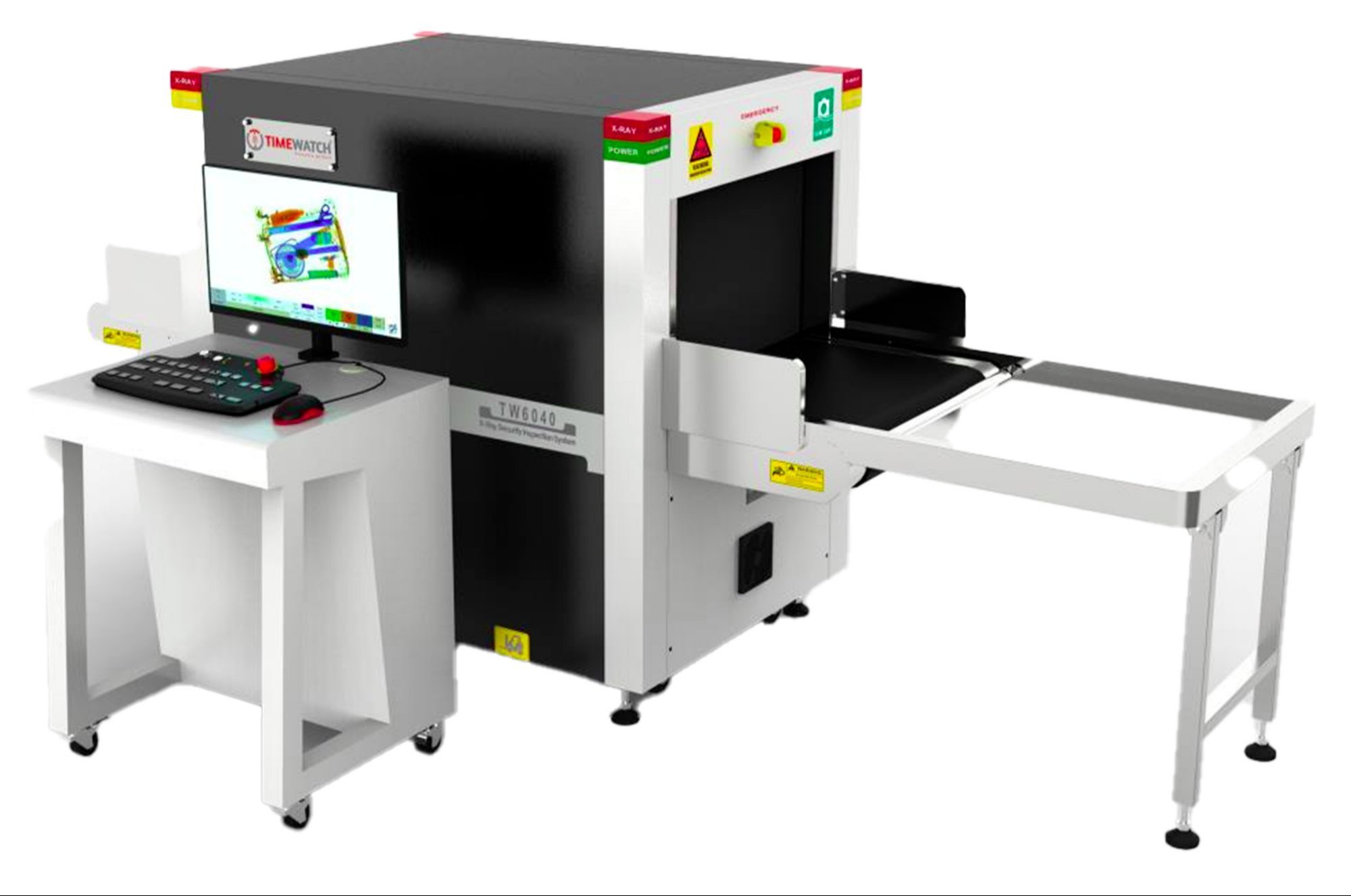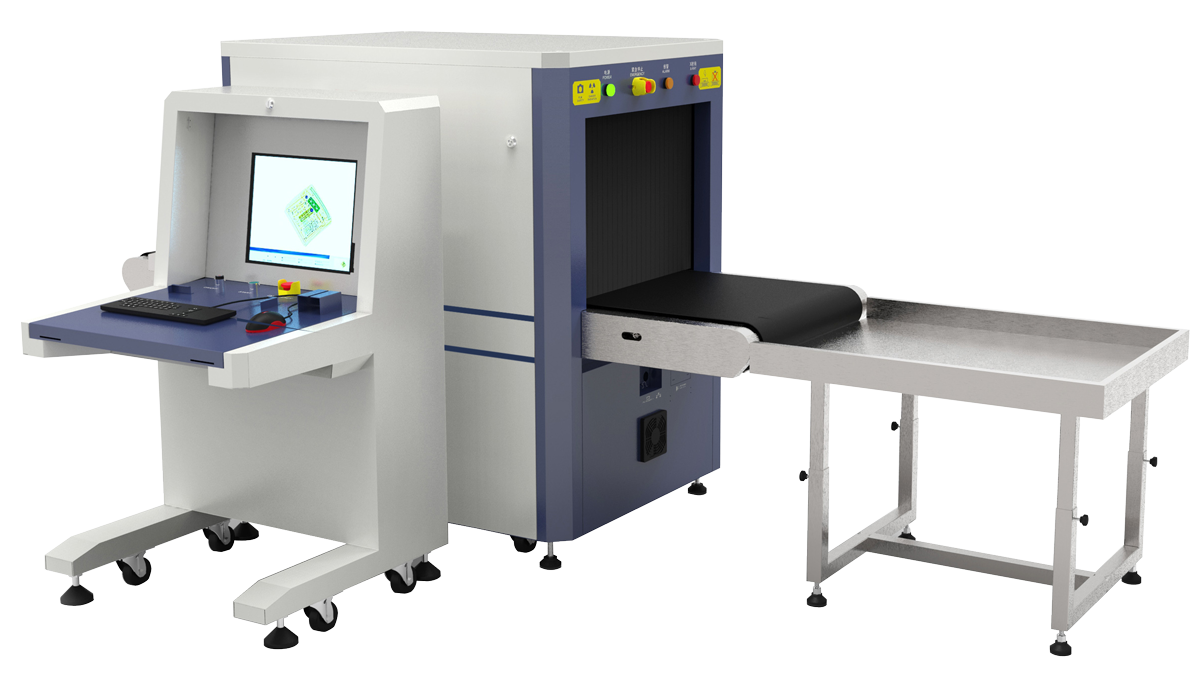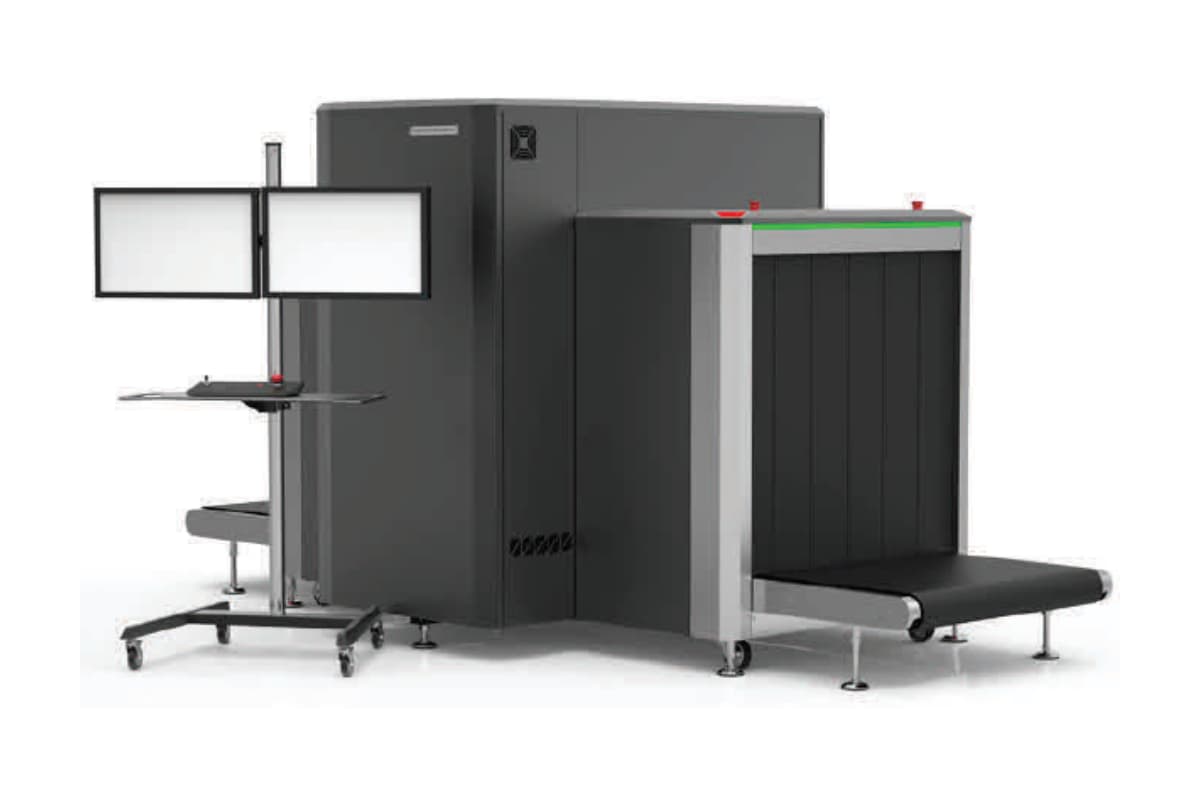- Home
- About Us
- Products
- Electronic Article Surveillance System EAS / Retail Anti theft Systems
- Display Stands
- Restaurant Pager
- People Counting Systems
- Queue Management Systems
- Access Control System
- Time Attendance Systems
- Audio & Visual System Solutions
- Display Solutions
- CCTV Cameras in Qatar: Enhancing Security Solutions
- Time Lapse Construction Camera
- Flap Barrier, Speed Gates, Turnstiles Access Control
- Gate Barriers System & Bollards in Qatar
- Parking Management & Gate Automation
- Library Management Systems
- IT & Telecom
- Lockers & Key Management Systems
- Intrusion Alarm System
- Perimeter Security
- Vehicle Tracking
- Time Recorders & Time Stamps
- Emergency Exit Door Alarms
- Clients
- Contact Us
- Support
Contents
- 1 X-Ray Baggage Scanner in Qatar
- 1.1 Introduction
- 1.1.1 What Are X-Ray Baggage Scanners?
- 1.1.2 How Do X-Ray Baggage Scanners Work?
- 1.1.3 Enhanced Capabilities
- 1.1.4 Different Models of X-Ray Baggage Scanners in Qatar
- 1.1.5 Choosing the Right Model
- 1.1.6 Contact Axle Systems for X-Ray Baggage Scanners Distribution in Qatar
- 1.1.7 Common FAQs about X-Ray Baggage Scanners
- 1.1.8 Case Studies
- 1.1.9 Benefits of X-Ray Baggage Scanners
- 1.1.10 Conclusion
- 1.1 Introduction
X-Ray Baggage Scanner in Qatar
Introduction
In today’s world, ensuring security is paramount, especially in high-traffic areas like airports, train stations, and public venues. One of the most effective tools in enhancing security measures is the X-ray baggage scanner. This technology has revolutionized the way we screen luggage, offering unparalleled efficiency and accuracy. In this blog post, we will delve into what X-ray baggage scanners are, how they work, the different models available in Qatar, best usage practices, and much more.
What Are X-Ray Baggage Scanners?
X-ray baggage scanners are advanced security devices used to inspect the contents of luggage, parcels, and other items without opening them. They utilize X-ray technology to create detailed images of the inside of a bag or package, allowing security personnel to identify prohibited or dangerous items such as weapons, explosives, and contraband. These scanners are essential tools in maintaining security in various environments, including airports, train stations, government buildings, and large public events.
Key Features:
- High-Resolution Imaging
- Detailed Inspection: X-ray baggage scanners provide high-resolution images that enable security personnel to see detailed views of the contents inside a bag. This clarity helps in identifying even the smallest items and potential threats that might be hidden.
- Multi-Angle Viewing: Some advanced scanners offer multi-angle viewing capabilities, allowing operators to rotate and zoom in on images for a more comprehensive inspection.
- Automatic Threat Detection
- Advanced Algorithms: Modern X-ray baggage scanners are equipped with sophisticated algorithms that automatically detect potential threats. These algorithms analyze the density, shape, and composition of items in the scanned image to identify weapons, explosives, and other prohibited materials.
- Color Coding: Threat detection systems often use color coding to highlight suspicious items. For example, organic materials like explosives might be shown in one color, while metals like guns are shown in another. This visual aid helps operators quickly assess and respond to potential threats.
- User-Friendly Interface
- Ease of Operation: The user interface of X-ray baggage scanners is designed to be intuitive and easy to use. Touchscreen controls, clear instructions, and straightforward navigation ensure that operators can efficiently use the system with minimal training.
- Customization Options: Interfaces can often be customized to suit the specific needs of different security environments. This flexibility allows for adjustments in sensitivity, display preferences, and other operational parameters.
- Durability
- Robust Construction: X-ray baggage scanners are built to withstand continuous use in high-traffic environments. They are constructed from durable materials that can handle the physical demands of constant operation.
- Reliable Performance: These scanners are designed to maintain high performance over extended periods. Regular maintenance schedules and self-diagnostic tools help ensure that the equipment remains in optimal working condition.
Additional Features:
- Dual-Energy Imaging: Dual-energy X-ray technology distinguishes between different types of materials by analyzing their absorption of X-rays at two different energy levels. This feature enhances the scanner’s ability to differentiate between organic and inorganic materials, improving the accuracy of threat detection.
- Network Connectivity: Many modern scanners can connect to a central network, allowing for remote monitoring, data sharing, and system updates. This connectivity is particularly useful in large installations where multiple scanners are used.
- Compact Design: Despite their advanced capabilities, X-ray baggage scanners are often designed to be compact and space-efficient, making them suitable for installation in various environments without requiring significant modifications to existing infrastructure.
- Energy Efficiency: Newer models are designed to be energy-efficient, reducing their operational costs and environmental impact. This is achieved through advanced engineering and the use of energy-saving technologies.
Importance of X-Ray Baggage Scanners:
- Enhanced Security: By providing a non-invasive method to inspect the contents of bags and parcels, X-ray baggage scanners play a crucial role in maintaining security and preventing the smuggling of dangerous items.
- Operational Efficiency: The quick and accurate scanning process minimizes delays and keeps the flow of passengers and goods moving smoothly. This efficiency is critical in high-traffic areas like airports and train stations.
- Regulatory Compliance: Many security protocols and regulations require the use of X-ray baggage scanners to meet safety standards. Using these devices ensures compliance with local and international security guidelines.
How Do X-Ray Baggage Scanners Work?
The functioning of X-ray baggage scanners involves several sophisticated processes that work together to produce detailed images of the contents inside a bag or package. These images allow security personnel to identify potential threats and prohibited items quickly and efficiently. Here’s a closer look at each step in the process:
1. X-ray Generation
- High-Energy Source: X-ray baggage scanners use a high-energy source, typically an X-ray tube, to generate X-rays. When the machine is activated, electricity is passed through the tube, creating a stream of X-rays.
- Controlled Emission: The emission of X-rays is carefully controlled to ensure the safety of both the operators and the items being scanned. Shielding within the machine prevents the X-rays from escaping into the surrounding environment.
2. Penetration
- X-ray Penetration: The generated X-rays pass through the baggage and its contents. As they penetrate different materials within the bag, the X-rays are absorbed at varying degrees depending on the density and composition of each item.
- Differentiation by Density: Denser materials, such as metals and thick plastics, absorb more X-rays and appear darker on the resulting image. Lighter materials, such as fabrics and organic items, absorb fewer X-rays and appear lighter on the image.
3. Detection
- X-ray Detectors: The machine is equipped with detectors placed opposite the X-ray source. These detectors capture the X-rays that pass through the baggage. They convert the X-rays into electrical signals, which are then processed to create an image.
- Detector Array: Modern X-ray baggage scanners use a linear array of detectors to capture the X-rays. This configuration ensures that the entire width of the baggage is scanned simultaneously, providing a comprehensive image of its contents.
4. Image Processing
- Signal Conversion: The electrical signals from the detectors are converted into digital data. This data is then processed using advanced software to create a high-resolution image of the bag’s contents.
- Image Formation: The software reconstructs the image by mapping the varying levels of X-ray absorption to different shades of gray or color, depending on the scanner’s capabilities. This detailed image highlights the shapes and densities of the items within the baggage.
5. Analysis
- Manual Analysis: Trained operators analyze the resulting images to identify any suspicious or prohibited items. They look for specific shapes, densities, and patterns that may indicate the presence of weapons, explosives, or contraband.
- Automatic Threat Detection: Many modern X-ray baggage scanners are equipped with automatic threat detection software. This software uses algorithms to analyze the images and highlight potential threats, such as firearms, knives, or explosives. The system can also differentiate between organic and inorganic materials, helping to identify items like drugs or explosives.
Enhanced Capabilities
Multi-View Imaging
- Dual-View and Multi-View Systems: Some advanced X-ray baggage scanners offer dual-view or multi-view imaging capabilities. These systems capture images from different angles, providing a more comprehensive view of the bag’s contents. This multi-angle approach improves the accuracy of threat detection and reduces the likelihood of items being missed during the scan.
3D Imaging
- Three-Dimensional Imaging: Cutting-edge X-ray baggage scanners can produce 3D images of the scanned items. By capturing multiple images from different angles and combining them, the scanner creates a three-dimensional representation of the contents. This 3D image allows operators to rotate and zoom in on objects, providing a more detailed and accurate inspection.
Artificial Intelligence
- AI Integration: The integration of artificial intelligence (AI) in X-ray baggage scanners enhances their threat detection capabilities. AI algorithms can analyze images faster and more accurately than human operators, identifying patterns and anomalies that may indicate a threat. These systems continually learn and improve, becoming more effective over time.
Different Models of X-Ray Baggage Scanners in Qatar
Several models of X-ray baggage scanners are available in Qatar, each catering to different security needs and applications. Here are some of the most popular ones:
1. AXS-SCAN 6040
Tunnel Size: 600mm x 400mm
Features:
- Dual-Energy Imaging: Utilizes two energy levels to distinguish between different materials. This feature enhances the accuracy of threat detection by differentiating organic and inorganic materials.
- Organic/Inorganic Material Differentiation: Helps operators identify specific types of materials, such as distinguishing between a plastic explosive and a metal weapon.
- Automatic Threat Detection: Advanced algorithms automatically identify potential threats, reducing the likelihood of human error and speeding up the inspection process.
Applications:
- Airports: Ideal for screening passenger luggage and carry-on items, ensuring that prohibited items do not enter secure areas.
- Government Buildings: Enhances security by thoroughly inspecting visitors’ bags, preventing the introduction of dangerous items.
- Courthouses: Provides a robust security solution to ensure the safety of staff and visitors by detecting weapons and other contraband.
Benefits:
- Compact Size: The tunnel size makes it suitable for various entry points without requiring significant space.
- Efficient Throughput: Capable of handling a high volume of items quickly, making it ideal for busy environments.
- High Accuracy: The dual-energy imaging and automatic threat detection features provide high accuracy in identifying threats.
2. AXS-SCAN 10080
Tunnel Size: 1000mm x 800mm
Features:
- High Penetration X-Rays: Capable of penetrating dense and large items, making it suitable for scanning bulky cargo.
- High-Resolution Imaging: Provides clear and detailed images, allowing for precise inspection of large and complex items.
- Multi-Language Support: User interface supports multiple languages, making it accessible for operators from diverse backgrounds.
Applications:
- Large Cargo Inspection: Ideal for screening large shipments, ensuring that they do not contain contraband or dangerous items.
- Logistics Centers: Enhances security in logistics and distribution centers by thoroughly inspecting incoming and outgoing goods.
- Large Event Security: Provides robust screening capabilities for large events, ensuring the safety of attendees by detecting prohibited items in bags and packages.
Benefits:
- High Capacity: The large tunnel size allows for the inspection of big and bulky items, increasing throughput in high-traffic areas.
- Advanced Detection: High penetration and high-resolution imaging improve the accuracy of detecting concealed threats.
- User-Friendly: Multi-language support and intuitive interface make it easy for operators to use effectively.
3. AXS-SCAN 7555
Tunnel Size: 750mm x 550mm
Features:
- Advanced Image Processing: Utilizes cutting-edge software to enhance image clarity and detail, making it easier to identify threats.
- Network Connectivity: Can be connected to a central network for remote monitoring, data sharing, and system updates.
- Enhanced Threat Detection Software: Features the latest algorithms for detecting a wide range of threats, from weapons to explosives.
Applications:
- Train Stations: Provides efficient screening of passenger luggage and carry-on items, ensuring the safety of passengers and staff.
- Metro Stations: Enhances security in public transportation systems by detecting potential threats before they can cause harm.
- Border Crossings: Ideal for inspecting vehicles and luggage at border checkpoints, preventing the smuggling of contraband and dangerous items.
Benefits:
- Versatility: Suitable for various environments, from public transportation to border security.
- Connectivity: Network connectivity allows for centralized management and real-time monitoring, enhancing overall security operations.
- Improved Detection: Advanced software and high-quality imaging improve the detection of concealed threats, ensuring thorough inspections.
Choosing the Right Model
When selecting an X-ray baggage scanner, it is essential to consider the specific security needs and operational requirements of your environment. Factors such as the size of the items to be scanned, the volume of traffic, and the level of threat detection required should all be taken into account. Axle Systems offers a range of models to meet diverse security challenges, ensuring that you can find the perfect solution for your needs.
Contact Axle Systems for X-Ray Baggage Scanners Distribution in Qatar
Axle Systems is your trusted partner for X-ray baggage scanners in Qatar. We offer a wide range of models to suit various security needs and environments. Our team of experts is here to help you choose the best solution and provide comprehensive support.
Contact Information:
- Phone: 44682391
- Email: [email protected]
Common FAQs about X-Ray Baggage Scanners
1. How Safe Are X-Ray Baggage Scanners for Humans?
Answer: X-ray baggage scanners are designed with stringent safety standards to ensure they are safe for both operators and passengers. The amount of radiation used in these scanners is very low and is contained within the machine to prevent exposure. Extensive shielding and safety features ensure that radiation does not escape the scanning chamber. Regular maintenance and safety checks are conducted to ensure the scanners remain safe to use. Therefore, the risk posed to humans by X-ray baggage scanners is negligible.
2. Can X-Ray Scanners See Through All Materials?
Answer: X-ray scanners are highly effective at penetrating and imaging most materials commonly found in luggage. However, very dense objects, such as thick metals or lead-lined containers, may appear as opaque areas on the scan. These opaque areas can obscure the contents behind them. Operators are trained to recognize these situations and may conduct additional inspections or use other detection methods to ensure that all items are properly screened.
3. How Long Does the Scanning Process Take?
Answer: The scanning process with an X-ray baggage scanner is very quick, typically taking just a few seconds per item. This rapid scanning capability allows for the efficient handling of large volumes of baggage, making these scanners ideal for high-traffic areas such as airports, train stations, and large events. The fast processing time ensures minimal delays while maintaining a high level of security.
4. Are There Any Items That Cannot Be Scanned?
Answer: While X-ray baggage scanners can handle most items, there are a few exceptions. Items such as photographic film and certain sensitive electronics may be affected by X-rays. High-speed film, in particular, can be fogged or damaged by exposure to X-rays. It is advisable to check with the specific guidelines of the scanner being used or consult with security personnel if you have concerns about specific items. Many security checkpoints offer alternative screening methods for such sensitive items.
5. What Happens If a Suspicious Item Is Detected?
Answer: If a suspicious item is detected during the scan, security personnel will follow established protocols to handle the situation. These protocols typically include:
- Further Inspection: The item may be subjected to a more detailed manual inspection or additional scanning.
- Alerting Authorities: If the item is deemed a significant threat, security personnel will alert law enforcement or other relevant authorities.
- Containment and Safety Measures: Precautions will be taken to ensure the safety of all individuals in the area, including possibly evacuating the vicinity or using containment equipment to handle dangerous items.
Security personnel are trained to handle such situations with care and professionalism to ensure safety while minimizing disruptions.
Case Studies
Case Study 1: Enhancing Airport Security in Qatar
Background: A major international airport in Qatar faced challenges in efficiently screening a high volume of passenger luggage while maintaining high security standards.
Solution: The airport installed several AXS-SCAN 10080 X-ray baggage scanners, which provided high-resolution images and automatic threat detection.
Outcome: The implementation resulted in a significant reduction in screening times and an increase in the detection of prohibited items, enhancing overall airport security.
Case Study 2: Securing a Major Public Event
Background: A large-scale public event in Qatar required robust security measures to ensure the safety of attendees.
Solution: Organizers deployed AXS-SCAN 6040 scanners at all entry points, ensuring that all bags were thoroughly screened without causing long wait times.
Outcome: The event proceeded without any security incidents, and the efficient screening process received positive feedback from attendees.
Benefits of X-Ray Baggage Scanners
- Enhanced Security: Provides a reliable method to detect and prevent prohibited items from entering secure areas.
- Efficiency: Rapid scanning process allows for high throughput of luggage and packages.
- Accuracy: Advanced imaging and threat detection technologies reduce the likelihood of human error.
- Cost-Effective: Reduces the need for manual inspections, saving time and labor costs.
- Versatility: Suitable for various environments including airports, train stations, government buildings, and public events.
Conclusion
X-ray baggage scanners are an essential component of modern security infrastructure, providing a powerful tool to enhance safety and efficiency. Whether you are managing security at an airport, public venue, or any other high-traffic area, these scanners offer unmatched reliability and accuracy. For the best X-ray baggage scanners in Qatar, trust Axle Systems to provide top-quality equipment and expert support. Contact us today to learn more about our offerings and how we can help you enhance your security measures.





